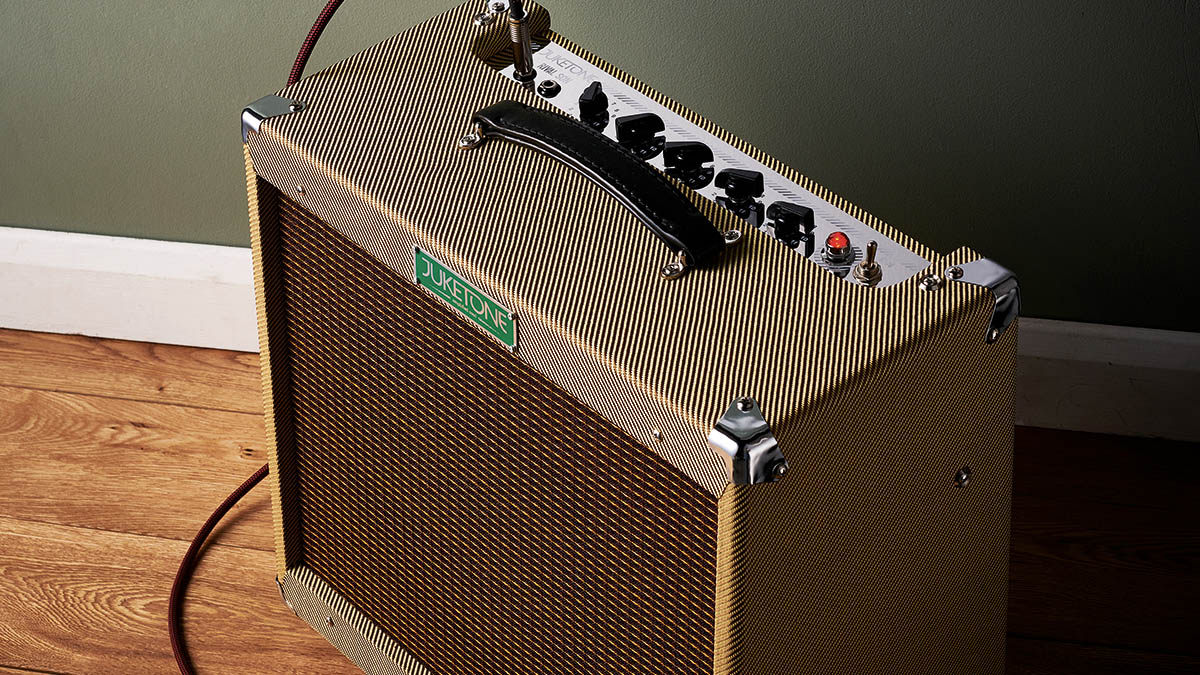Guitar World Verdict
Ideal for beginners, enthusiastic amateurs and weekend warriors, the Rival Son’s all-valve tones and dynamics are great for home, studio and stage alike.
Pros
- +
Proper valve sounds from a deceptively simple control panel. Great for home use or smaller gigs.
- +
Brilliant value for money, with free shipping to the UK.
Cons
- -
It would be nice if there were a footswitch for the tremolo, but at this price it’s easy to forgive.
You can trust Guitar World
The tweed-covered guitar combo is one of music’s most enduring product formats, dating right back to the original guitar amps made by Fender in the mid-1950s.
Other features of those groundbreaking early Fenders included a pine cabinet with hand-wired eyelet board electronics inside a chromed steel chassis, Jensen Alnico loudspeakers, white lettering, and chickenhead knobs that went all the way to 12 (which Spinal Tap fans know is one more than 11 and two more than 10!).
Ever since, the looks, if not the electronics, have been repeatedly plundered by manufacturers looking to impart some vintage mojo to their designs, not least Fender itself, who mashed several different styles together including tweed for its 1990s Blues amps, which preceded the popular Hot Rod series.
Other notable tweed entries over the years include Peavey’s long-running Classic amp series, while cult brands such as Carvin turned out some pretty neat designs, too, namely the Nomad and Belair combos.
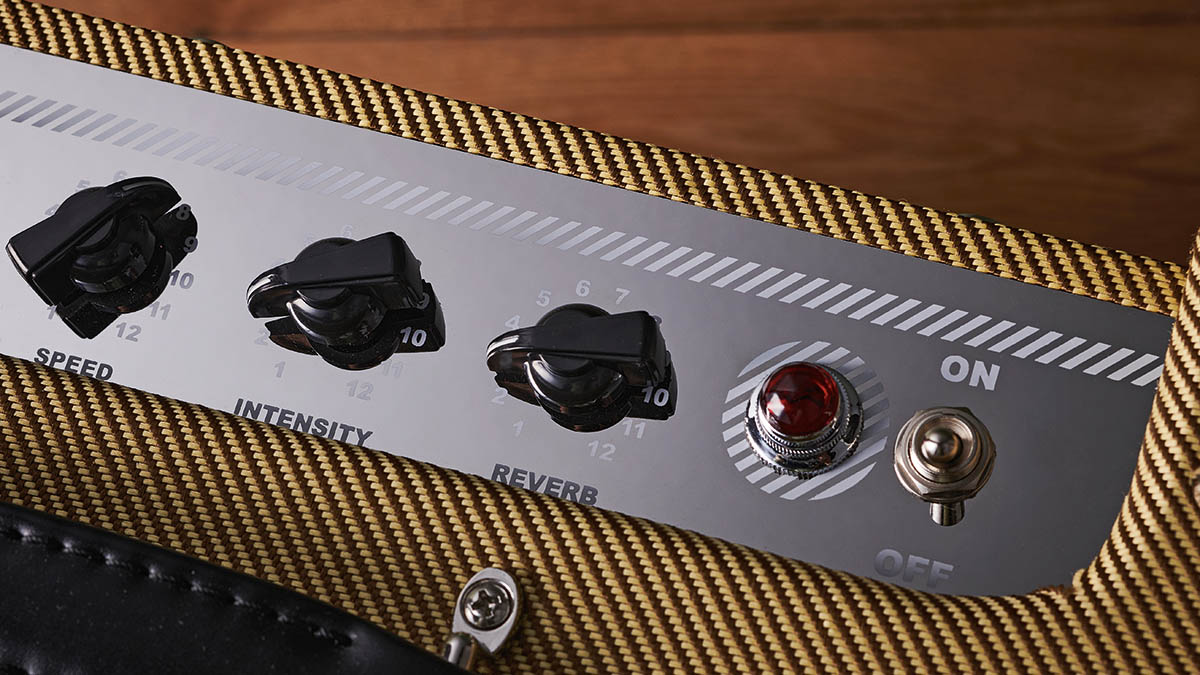
At the top end of the market, boutique replicas from builders such as 633 Engineering, Lazy J and Victoria combine hand-wired individuality with high-class joinery and meticulous attention to detail.
While some of these can cost thousands of pounds, happily there are affordable alternatives if you’re after tweed on a budget – and one of the most popular is Juketone, with an interesting range of amps based on classic designs, including this month’s Rival Son 1x12 combo.
Housed in a handsome tweed-covered plywood cabinet, Juketone’s Rival Son is a capable 15-watt combo with a pair of Ruby EL84 valves driving a Celestion Seventy-80 12-inch loudspeaker. Normal and Bright input jacks feed simple Volume and Tone knobs, with Speed and Intensity controls for the amp’s bias tremolo effect, and a level control for the old-school spring reverb.
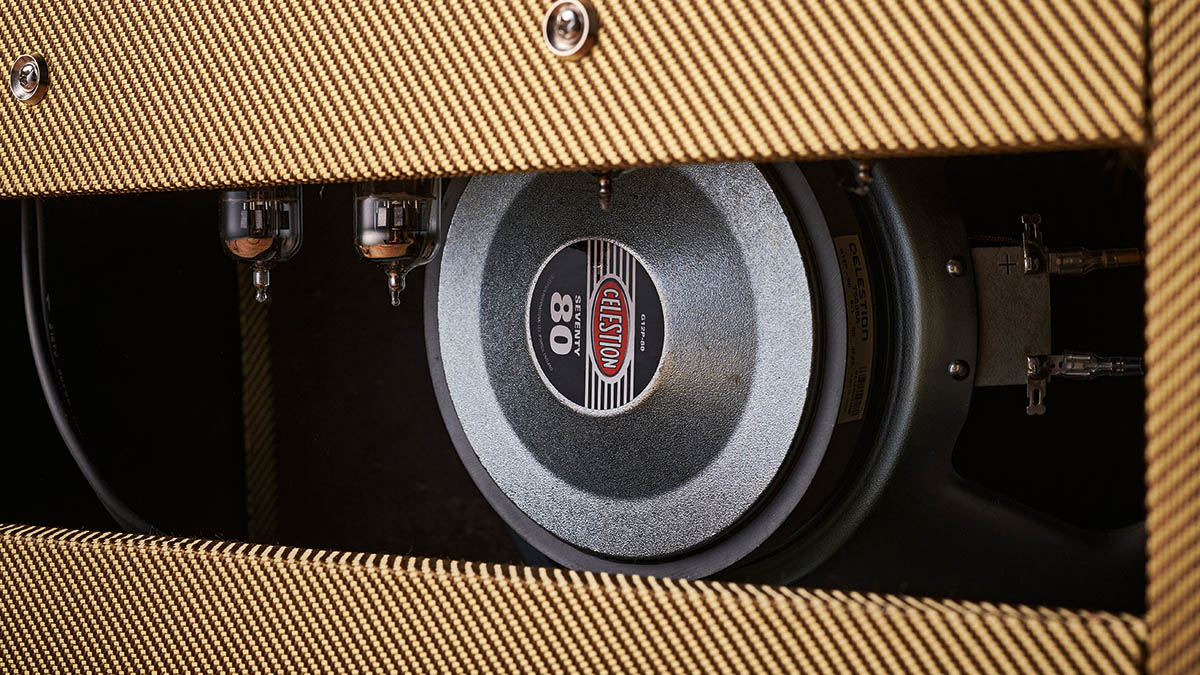
Inside the chrome steel chassis you’ll find two single-sided printed circuit boards connected by ribbon cables. The main board holds most of the electronics, including the front-panel controls, with a smaller second board for the EL84s and two 12AX7 preamp valves, which plug into porcelain sockets.
Both boards are supported on solid brass standoffs, with neat, minimal wiring helping keep noise to a minimum. Overall, it’s a decent standard combo for the money and built to last, particularly that ply cabinet when most of the close rivals use particle board.
Feel & Sounds
We checked out the Juketone with our regular Les Paul Standard fitted with old PAFs and a Strat loaded with Duncan Alnico Pros. The Rival Son’s tones sit roughly in the middle of the Atlantic, producing a tweed vibe that’s flavoured with more than a hint of AC15.
The simple one-knob Tone control is surprisingly versatile, and in combination with the Volume there’s a wide range of clean and not-so-clean tones that work really well with brighter PAF-alike humbuckers or single coils.
In common with many vintage amps, there’s no boost function or gain control, so if you want to hear overdrive you’ll either need to turn up the amp or use a pedal or attenuator if you want to stay on speaking terms with your neighbours.
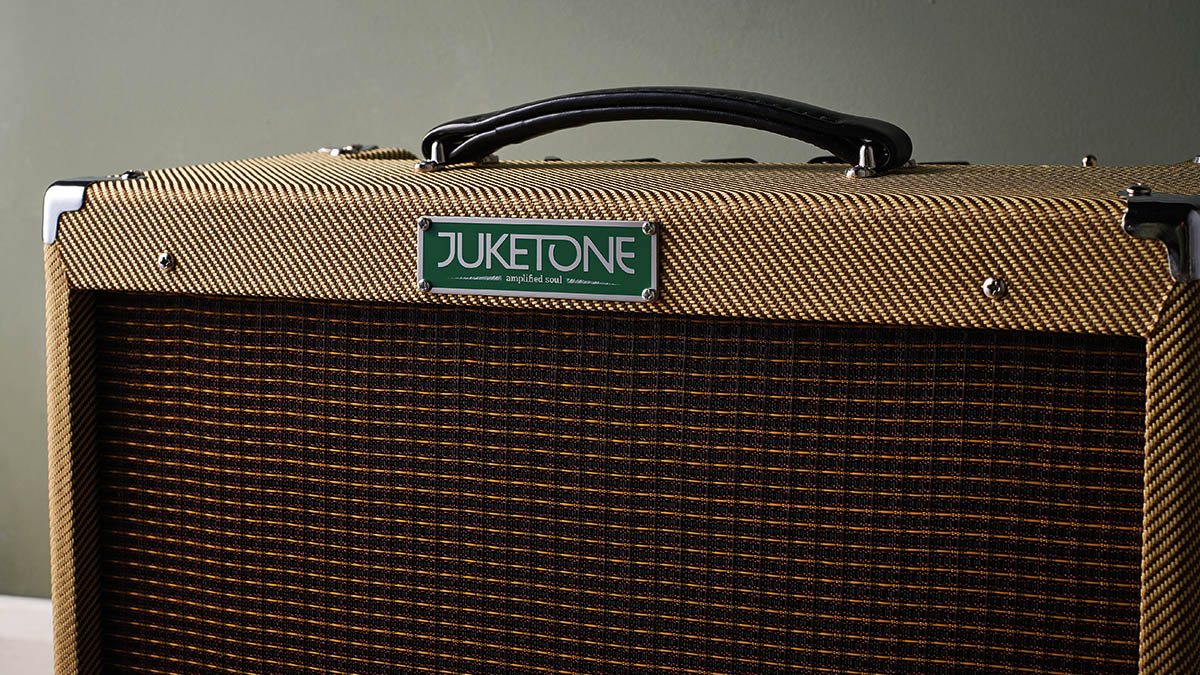
Because the Juketone’s core sound is fairly transparent, it’s an easy fit with many different musical genres, sounding best with blues, pop and classic rock.
Use a Strat bridge pickup and pick over the neck pickup, holding the vibrato arm with your little finger, and you can get a convincing Hank B Marvin, while adding tremolo and pushing the volume harder is very much on the Link Wray Rumble target. Max things out with the Les Paul and you’re good for Texas Blues in the style of early Tres Hombres-era ZZ Top.
The dynamics are friendly and the amp responds as you dig in for a rewarding playing experience that’s great fun once things are dialled in. There’s a cool sweet spot with Volume and Tone controls both a little below halfway, where the amp begins to bare its teeth yet cleans up easily by backing off on the guitar’s Volume control.
The built-in effects are an interesting anachronism. Tremolo was never an option on Fender’s original tweed amps, making its debut at the end of the 1950s in the short-lived brown-panel and blonde amps, while spring reverb was only available in a separate box until 1963 and the arrival of the Vibroverb, which was joined a year later by the all-conquering black-panel amps, including the Super Reverb and Twin Reverb.
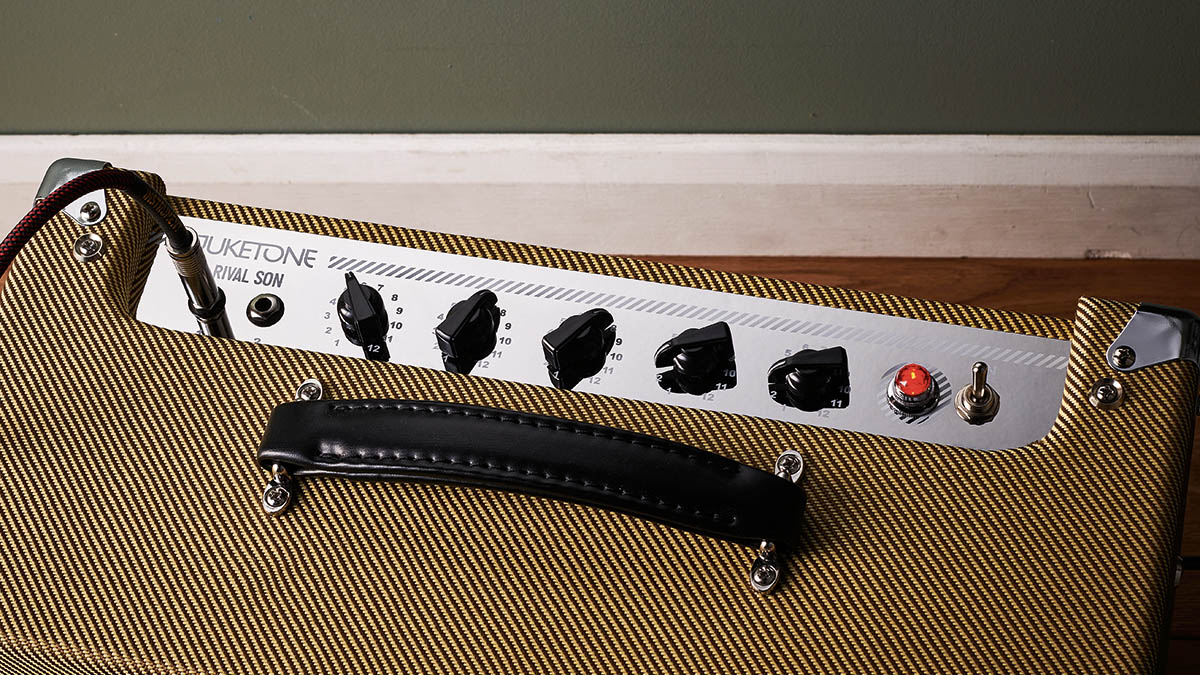
Both the Juketone’s effects sound suitably vintage; there’s a wide range of speeds on the tremolo and plenty of level from the op-amp powered reverb, which goes from ambient warmth to a crashy, splashy surf at higher levels. Neither effect can be footswitched, which is fine for home use but maybe less so for live, where you’d probably want to toggle the tremolo on and off.
In keeping with most vintage amps equipped with reverb and tremolo, the reverb comes first, sitting at the end of the preamp, while the tremolo circuit operates in the power stage by modulating bias, so you can hear the reverb tail being tremolo’d along with your guitar signal. Despite being the reverse of what would be considered logical, the ‘reverb first, tremolo second’ effects order sounds great and has a suitably vintage vibe.
Verdict
Juketone’s Rival Son is a great-sounding, compact all-valve combo with a wide range of tones from a deceptively simple control layout, and we reckon it’s brilliant value for money, coming direct from the distributor. It’s plenty loud enough for smaller gigs, too, despite the modest 15-watt output.
This is thanks partly to the resonant ply cabinet and the punchy upper mids of the G12 Seventy-80, one of Celestion’s best budget speakers, which is sometimes fitted to top-drawer boutique products in preference to other more expensive drivers. At lower volume levels, the Rival Son’s clarity and headroom also make it a useful pedal platform if that’s important to your playing.
Ideal for beginners, enthusiastic amateurs and weekend warriors, the amp’s all-valve tones and dynamics are great for home, studio and stage alike.
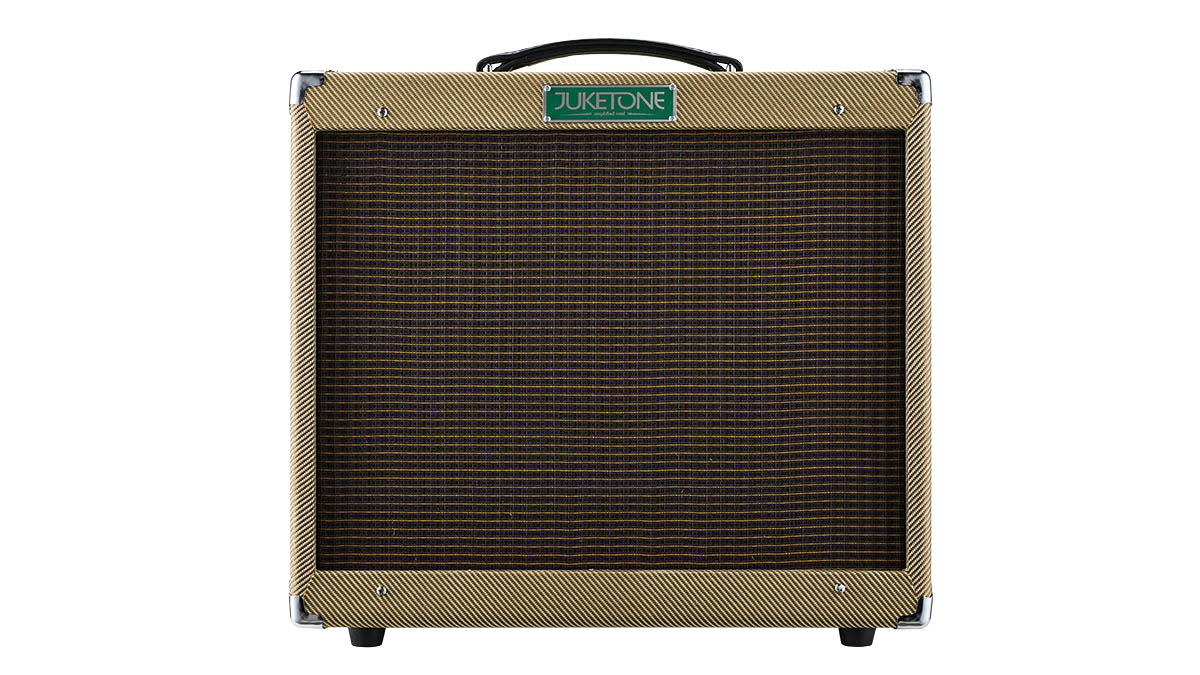
Specs
- PRICE: £445
- ORIGIN: China
- TYPE: Valve preamp and valve power amp
- OUTPUT: 15W
- VALVES: 2x 12AX7, 2x EL84
- DIMENSIONS: 415mm (h) x 475mm (w) x 260mm (d)
- WEIGHT (kg/lb): 14/31
- CABINET: Plywood
- LOUDSPEAKERS: 1x Celestion 12” Seventy-80
- CHANNELS: 1 with Normal and Bright inputs
- CONTROLS: Volume, tone, tremolo speed and intensity, reverb level
- ADDITIONAL FEATURES: Built-in tremolo and spring reverb
- OPTIONS: None
- RANGE OPTIONS: The Juketone range includes the Trailblazer lunchbox head (£249), Royal Blood combo (from £305), True Blood tweed Champ replica (£300) and Blue Blood tweed Deluxe clone (£749)
- CONTACT: Juketone
Nick Guppy was Guitarist magazine's amp guru for over 20 years. He built his first valve amplifier at the age of 12 and bought, sold and restored many more, with a particular interest in Vox, Selmer, Orange and tweed-era Fenders, alongside Riveras and Mark Series Boogies. When wielding a guitar instead of soldering iron, he enjoyed a diverse musical career playing all over the UK, including occasional stints with theatre groups, orchestras and big bands as well as power trios and tributes. He passed away suddenly in April 2024, leaving a legacy of amplifier wisdom behind him.
